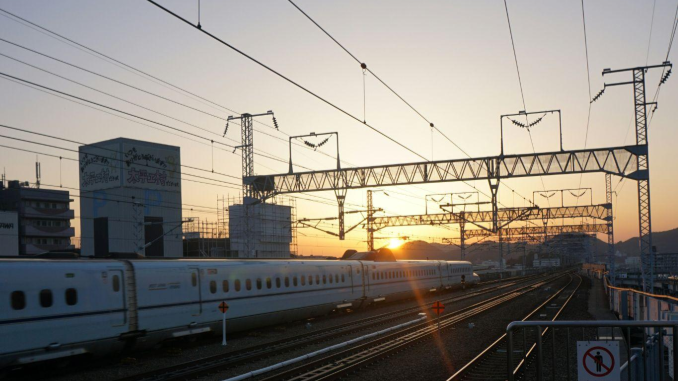
Introduction:
High-speed rail (HSR) is at the forefront of transforming rail transport, achieving velocities much greater than traditional trains. Utilising specialised tracks and cutting-edge rolling stock, HSR stands as the quickest mode of ground-based commercial travel. Though establishing this infrastructure demands substantial investment, the triumphant implementations in China, Europe, and Japan underscore its considerable advantages. These include enhanced city-to-city connections, fostering greater economic and social integration. India’s venture into this technological frontier with the 500-kilometre Ahmedabad-Mumbai high-speed corridor, supported extensively by Japanese funding, signifies a major step in advancing its transport network into a new era.
National Benefits of High-Speed Rail
HSR brings a multitude of social and economic advantages:
- Social Impact: High-speed rail promotes employment through enhanced connectivity and economic activity, significantly reducing CO2 emissions, and requires less land compared to highways, making it an environmentally friendly option.
- Economic Growth: Powered by domestic electric power, HSR reduces India’s dependency on imported fuels, aligning with the nation’s economic interests and sustainability goals.
- Real Estate and Urban Development: The introduction of bullet train routes boosts real estate values and urban development opportunities in adjacent areas, fostering growth and modernization.
- Reducing Road Congestion: HSR offers a cleaner, quieter alternative to road transport, cutting down on pollution and traffic accidents, thereby contributing to public health and a cleaner environment.
- Changing Travel Dynamics: This project aims to transform intercity travel by attracting passengers from other transport modes and catering to the increasing demand fueled by India’s economic growth.
Timeline of India’s High-Speed Rail Initiative
Launched with the “Vision 2020” by the Ministry of Railways on December 18, 2009, India’s plan for a high-speed rail network aimed at connecting major cities with speeds of 250–350 km/h. The National High-Speed Rail Corporation Limited (NHSRCL) was established on February 12, 2016, to bring this vision to life. Railways and Telecom Minister Ashwini Vaishnaw announced that the country’s first bullet train is expected to commence operations in August 2026, with further expansion planned for 2027.
Mumbai-Ahmedabad High-Speed Rail Corridor Overview
The Mumbai-Ahmedabad High-Speed Rail (MAHSR) project, also known as the Bullet Train project, is a transformative venture to construct a 508.17 km high-speed rail line connecting Mumbai, Maharashtra, and Ahmedabad, Gujarat. Estimated to cost Rs. 1.1 lakh crore (US$15 billion), this ambitious project features 12 strategically located stations designed to enhance connectivity between major business, tourism, and pilgrimage destinations.
Key Highlights and Progress
Utilising advanced Shinkansen technology, the project aims for trains to reach top speeds of 320 km/h, reducing travel time significantly. For instance, the journey with minimal stops is expected to take about 2 hours and 7 minutes.
Indo-Japan Collaboration
Japan’s renowned railway system forms the foundation of a strategic partnership with India, culminating in the Mumbai-Ahmedabad High-Speed Rail (MAHSR) project under the global PGII initiative. In 2015, India and Japan signed a memorandum during Prime Minister Shinzo Abe’s visit, securing a concessional loan for the project. Utilising Japan’s Shinkansen Technology, the project aims to revolutionise Indian Railways with a 508 km high-speed corridor, backed by a Rs. 79,000 crore loan from Japan. This collaboration extends to training and organisational development to ensure the project’s success.
Technological and Construction Innovations
- Shinkansen and Local Manufacturing: The project leverages Shinkansen technology, with plans to establish local manufacturing units for bullet train components through public-private partnerships.
- Advanced Construction Techniques: The use of high-speed girder-launching machinery, significantly faster than traditional methods, marks a technological leap in constructing the MAHSR corridor, showcasing an efficient and innovative approach to infrastructure development.
Global Context of High-Speed Rail
HSR is transforming global connectivity, with several countries advancing their rail systems:
| United Kingdom | The HS2 project aims to enhance connectivity between major cities, promising speeds up to 225 mph. |
| Germany | Focuses on international connections and is developing new HSR lines, like the project in Thuringia to improve travel times. |
| France | Boasts one of the world’s most extensive HSR networks, continuously expanding to connect with neighbouring countries. |
| United States | Emphasises HSR for economic and environmental benefits, with significant projects underway in California and between California and Nevada. |
| Spain | Home to Europe’s largest HSR network, impacting urban development and tourism, especially with the upcoming Avril trains. |
| Italy | Features HSR lines that spur economic growth, with ongoing expansions to enhance national connectivity. |
| China | Leads in HSR development, aiming to double its network by 2035 to connect major and medium-sized cities across vast distances. |
Conclusion
India’s foray into high-speed rail signals a pivotal shift towards modern, sustainable, and efficient transportation, aligning it with global standards and fostering a new era of connectivity and economic growth. This venture reflects India’s resolve to overcome challenges and embrace a future where travel is transformed, promising significant benefits for its people and the broader region.
Image Credit (representational): Unsplash

